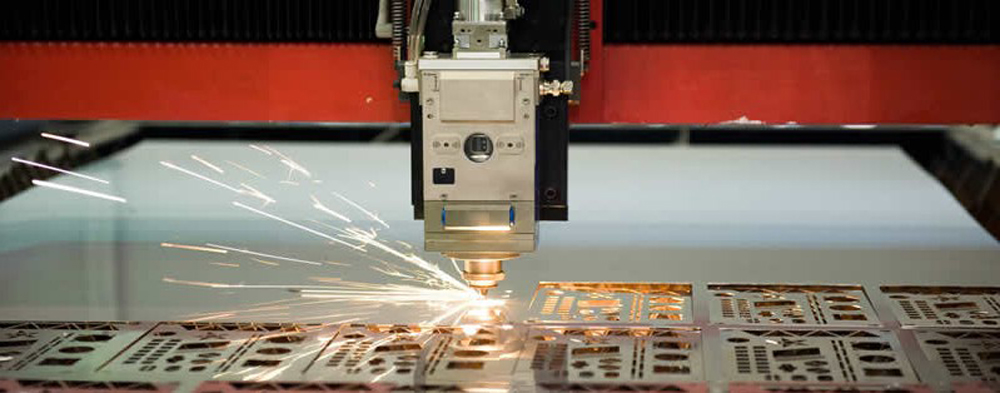What do you value?
A customer recently posed that question, a very good question with a lot of possible different answers. The best "value" in a machine depends on what is most "valuable" to you! Some of the things you might value the most would be cost to purchase the machine, operating cost, cut quality, cut part precision, or production rate. So let’s take a quick look at some of the differences between these three cutting processes and compare how they might rate.
Purchase Cost
Regarding initial investment cost to purchase a machine, the lowest cost would be a plasma cutter. Depending on type, size, and features, a CNC plasma cutting machine could range anywhere from $15,000 to $300,000. That’s a big range, but the vast majority of CNC plasma machines sold today are well below the $100,000 mark. Also, if you are comparing against waterjet and laser, then you are talking about a real CNC machine, and not a low-cost, entry-level, garage-shop type of machine, so it’s going to start closer to $50,000. For the purposes of this article we’ll assume that a plasma would range between $50, and $100,000. CNC waterjet machines require an expensive Ultra High Pressure Intensifier pump, so they are going to range from at least $100,000 to as much as $350,000, depending on size and options. Finally,
CNC laser cutting machines are usually the most costly. There are plenty of used machines around which could be had in the neighborhood of $250,000. But a new machine is typically going to start in the $350,000 range and could easily exceed $1,000,000.
Operating Cost
When it comes to operating cost, you have to take into consideration power, gases, consumables, abrasive, and routine maintenance cost. Plasma operating cost would again be the lowest, and is typically estimated at approximately $15/hour. The cost of laser would be slightly higher, typically estimated at around $20/hour. Waterjet is usually considered to be the most expensive, typically estimated at about $30/hour.
Production Rate
No discussion of operating cost is complete without also considering production rate, because your total cost per part is going to be determined by the cost per hour to run the machine, divided by the number of parts produced per hour. Production rate is judged by comparing cutting speed. A fair evaluation would also need to include the number of cutting tools, because you can easily have a machine with four waterjet heads cutting simultaneously. But for the purpose of this evaluation, we’ll just compare the process speeds by themselves, assuming that we are talking about a small machine with a single cutting tool. This is where plasma beats all the rest, as it can cut many materials anywhere from 60 to 200 ipm (inches per minute). Laser is much slower on most thicknesses, typically in the range of 20 to 70 ipm. Waterjet is by far the slowest. Depending on thickness and quality level, speeds on metal plate are going to range from 15 ipm on down to a fraction of an inch per minute.
Cut Edge Quality
Cut edge quality refers to the squareness of the finished edge, as well as how much dross adheres to the bottom of the cut. The highest quality cut would usually be from Waterjet, which gives a very square cut with no dross, and no pierce spatter. Laser is a very close second place, because it also yields a very square cut, but on thicker mild steel or on stainless steel it can leave some dross and generates some pierce spatter. By comparison with these two processes, plasma cutting would have the lowest cut quality. Plasma will always have some edge bevel angle and often causes some dross. It also generates much more pierce spatter than laser, due to the larger kerf width.
Cut Part Precision
Cut part precision is a measure of the actual resulting part size compared to the programmed part size, and also includes consideration of the kerf width, which determines how small of an inside contour can be cut. Heat distortion should also be considered, as it can throw off the finished part size as well as cause the parts to warp. Again, waterjet would be the best precision, usually in the neighborhood of +/- 0.005”, and having a kerf width around 0.035”. Waterjet also causes no heat-distortion. Laser would be very close second place, with typical part dimensions of +/-0.005”, and average kerf width around 0.025”. But laser can cause some heat distortion, especially on thicker plate. Again, plasma comes in last place, having a typical part size tolerance around +/-0.020”, and a typical kerf width of around 0.150”. Plasma also creates some heat distortion, which can be reduced by cutting under-water.
Flexibility
This criteria can’t be quantified as easily as something like cost or speed. But it might be extremely important to consider the variety of materials you can cut in your buying decision.
Waterjet cutting is by far the most flexible of these 3 cutting processes, because it can cut almost any material. Laser is limited to metalics, some plastics and fiberglass, some fabric. Plasma is the most limited. It can only cut conductive metals, and is practical for mild steel, stainless steel, and
custom aluminum cutting service.
Conclusion
There are many other things that could be taken into account, and much more accurate assessments available, but this comparison gives a quick overview with relative ratings for some of the things that people will value most in a CNC cutting system. The result though, depends on which criteria is most valued to you and your company.


